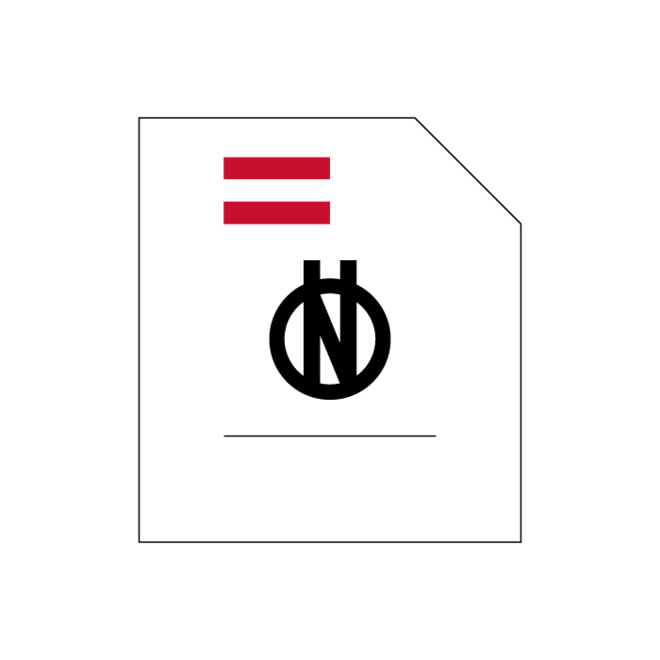Jetzt anpassen und kaufen
489,04 €
exkl. USt.
Konfigurieren


Norm
ÖVE/ÖNORM EN 61158-5
Ausgabedatum: 2005 07 01
Digital data communication for measurement and control - Fieldbus for use in industrial control systems - Part 5: Application layer service definition (IEC 61158-5:2003 + Corrigendum 2004) (nur elektronisch erhältlich)
The fieldbus Application Layer (FAL) provides user programs with a means to access the fieldbus communication environment. In this respect, the FAL can be viewed as a win...
Weiterlesen
Gültig
Herausgeber:
Austrian Standards International
Format:
Digital | 1299 Seiten
Sprache:
Englisch
Fachgebiete
alle anzeigen
Mechanical & plant engineering, Industrial automation systems, IT applications in industry
Mechanical & plant engineering, Industrial automation systems, Industrial automation systems in general
IT, communication & electronic, Applications of information technology, IT applications in industry
IT, communication & electronic, Information technology, Application layer
Machine components & tools, Hand-held tools, IT applications in industry
The fieldbus Application Layer (FAL) provides user programs with a means to access the fieldbus communication environment. In this respect, the FAL can be viewed as a window between corresponding application programs. The FAL is an Application Layer Communication Standard designed to support the conveyance of time-critical and non-time-critical application requests and responses among devices in an automation environment. The term time-critical is used to represent the presence of an application time-window, within which one or more specified actions are required to be completed with some defined level of certainty. This standard specifies the structure and services of the IEC fieldbus Application Layer. It is specified in conformance with the OSI Basic Reference Model (ISO/IEC 7498) and the OSI Application Layer Structure (ISO/IEC 9545). FAL services and protocols are provided by FAL application-entities (AE) contained within the application processes. The FAL AE is composed of a set of object-oriented Application Service Elements (ASEs) and a Layer Management Entity (LME) that manages the AE. The ASEs provide communication services that operate on a set of related application process object (APO) classes. One of the FAL ASEs is a management ASE that provides a common set of services for the management of the instances of FAL classes. This part of IEC 61158 specifies interactions between remote applications in terms of an abstract model for defining application resources (objects) capable of being
manipulated by users via the use of FAL Services, the primitives (interactions between the FAL and the FAL user) associated with each FAL Service; the parameters associated with each primitive; the interrelationship between and the valid sequences of the primitives for each service. Several models of communications are specified in this document. Each model is specifed as a communciation type (...abbreviated)
ÖVE/ÖNORM EN 61158-5
2005 07 01
Digital data communication for measurement and control - Fieldbus for use in industrial control syst...
Norm
↖
ÖVE/ÖNORM EN 50170/A1+A3
2003 09 01
General purpose field communication system (Amendment) --- nur CD ---
Norm
Norm
ISO/IEC 646:1991
Ausgabedatum :
1991 12 16
Information technology — ISO 7-bit coded character set for information interchange
Norm
ISO/IEC 7498-1:1994
Ausgabedatum :
1994 11 17
Information technology — Open Systems Interconnection — Basic Reference Model: The Basic Model (Corrected version 1996-06)
Norm
ISO/IEC 7498-3:1997
Ausgabedatum :
1997 04 03
Information technology — Open Systems Interconnection — Basic Reference Model: Naming and addressing
Norm
ISO/IEC 8822:1994
Ausgabedatum :
1994 12 22
Information technology — Open Systems Interconnection — Presentation service definition
Norm
ISO/IEC 8824:1990
Ausgabedatum :
1990 12 20
Information technology — Open Systems Interconnection — Specification of Abstract Syntax Notation One (ASN.1)
Norm
ISO/IEC 8859-1:1998
Ausgabedatum :
1998 04 16
Information technology — 8-bit single-byte coded graphic character sets — Part 1: Latin alphabet No. 1
Norm
ISO/IEC 9545:1994
Ausgabedatum :
1994 07 28
Information technology — Open Systems Interconnection — Application Layer structure
Norm
ISO/IEC 10646-1:1993
Ausgabedatum :
1993 05 20
Information technology — Universal Multiple-Octet Coded Character Set (UCS) — Part 1: Architecture and Basic Multilingual Plane
Norm
ISO/IEC 10731:1994
Ausgabedatum :
1994 12 15
Information technology — Open Systems Interconnection — Basic Reference Model — Conventions for the definition of OSI services
